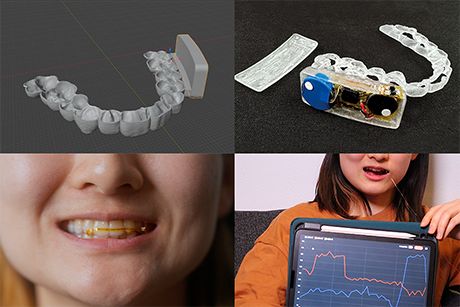Inside the Innards of a Nuclear Reactor
Tiny robots may monitor underground pipes for radioactive leaks.

A spherical robot equipped with a camera may navigate underground pipes of a nuclear reactor by propelling itself with an internal network of valves and pumps.
The radioactive crisis in Japan has served to shine a bright light on nuclear reactors around the world. In June, The Associated Press released results from a yearlong investigation, revealing evidence of “unrelenting wear” in many of the oldest-running facilities in the United States.
Harry Asada, the Ford Professor of Engineering in the Department of Mechanical Engineering and director of MIT’s d’Arbeloff Laboratory for Information Systems and Technology, says one of the major challenges for safety inspectors is identifying corrosion in a reactor’s underground pipes. Currently, plant inspectors use indirect methods to monitor buried piping; the only direct monitoring requires digging out the pipes and visually inspecting them — a costly and time-intensive operation.
Now Asada and his colleagues at the d’Arbeloff Laboratory are working on a direct monitoring alternative: small, egg-sized robots designed to dive into nuclear reactors and swim through underground pipes, checking for signs of corrosion. The underwater patrollers, equipped with cameras, are able to withstand a reactor’s extreme, radioactive environment, transmitting images in real-time from within.
Cannonball
At first glance, Asada’s robotic inspector looks like nothing more than a small metallic cannonball. There are no propellers or rudders, or any obvious mechanism on its surface to power the robot through an underwater environment. Asada says such “appendages,” common in many autonomous underwater vehicles (AUVs), are too bulky for his purposes and would easily lodge in a reactor’s intricate structures, including sensor probes, networks of pipes and joints. “You would have to shut down the plant just to get the robot out,” Asada says. “So we had to make [our design] extremely fail-safe.”
He and his graduate students, Anirban Mazumdar and Ian Rust, decided to make the robot a smooth sphere, devising a propulsion system that can harness the considerable force of water rushing through a reactor. The group devised a special valve for switching the direction of a flow with a tiny change in pressure and embedded a network of the Y-shaped valves within the hull, or “skin,” of the small, spherical robot, using 3-D printing to construct the network of valves, layer by layer.
Depending on the direction they want their robot to swim, the researchers can close off various channels to shoot water through a specific valve. The high-pressure water pushes open a window at the end of the valve, rushing out of the robot and creating a jet stream that propels the robot in the opposite direction.
Robo-patrol
As the robot navigates a pipe system, the onboard camera takes images along the pipe’s interior. Asada’s original plan was to retrieve the robot and examine the images afterward. But now he and his students are working to equip the robot with wireless underwater communications, using laser optics to transmit images in real time across distances of up to 100 meters. The team is also working on an “eyeball” mechanism that would let the camera pan and tilt in place.![]()
Exerpted from a story by Jennifer Chu. To read the whole story, visit MIT’s New Office:
http://web.mit.edu.ezproxy.canberra.edu.au/newsoffice/2011/nuclear-robots-0721.html.


